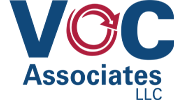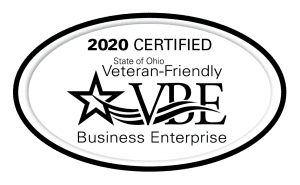Effective team communication is the bedrock of high-functioning workplace ecosystems. It fosters a collaborative atmosphere where ideas can be exchanged openly, enabling the synthesis of diverse perspectives into innovative solutions. When communication flows seamlessly across the hierarchical and peer levels, it not only boosts productivity but also underpins team cohesion and morale.
Conversely, poor communication can result in misunderstandings, bottlenecks, and a detrimental impact on workplace dynamics, manifesting in diminished trust and cooperation among team members. We will explore the role of team communication in shaping workplace dynamics and examine strategies to enhance it.
Benefits of Strong Team Communication
Team communication has many benefits, including:
- Enhanced Collaboration and Innovation: When team communication is strong, collaboration flourishes. Open dialogue unleashes the collective creativity of the group, fostering an environment where innovation is not just encouraged but expected. Team members feel more comfortable sharing new ideas and perspectives, leading to innovative solutions and a competitive edge in the marketplace. This shared creativity cements the foundation for a high-functioning team that is agile, forward-thinking, and prepared to meet the challenges of an ever-evolving business landscape.
- Increased Efficiency and Productivity: Effective communication promotes clarity, which maintains a clear sense of direction within the team. When expectations are understood, tasks are completed accurately and efficiently. Communication also facilitates a smooth workflow, reducing delays caused by misunderstandings or lack of information. This streamlined process translates into increased productivity both for individual team members and the team as a whole.
- Improved Employee Satisfaction and Retention: Open communication channels foster trust and empower team members to share their thoughts, feelings, and concerns freely. This inclusivity makes employees feel valued, increasing job satisfaction as they are more involved in the decision-making process. As a result, turnover rates decrease as employees become more invested in the company’s success.
Common Communication Challenges in the Workplace
The process of communication presents a multitude of challenges that individuals encounter on a daily basis, encompassing various aspects such as effective articulation, active listening, understanding non-verbal cues, and fostering meaningful connections. These challenges, although not exhaustive, highlight the complexity and importance of communication in our personal and professional lives.
Lack of Clarity and Misinterpretation
The gap between the message sent and the message received can be vast if clarity is missing. Ambiguity can lead to misunderstandings, errors, and frustration.
Communication Barriers and Cultural Differences
In today’s increasingly interconnected and globalized workplace, the presence of diverse cultural backgrounds adds complexity to team communication. Recognizing, acknowledging, and appreciating these cultural differences is of utmost importance in order to foster effective collaboration and eliminate potential misunderstandings. By cultivating a mindful and respectful approach towards these differences, teams can create an inclusive and harmonious work environment where everyone feels valued and heard.
Communication Overload and Information Silos
In the digital age, information can be overwhelming. Too much communication or poorly organized information dissemination can be counterproductive, causing misalignment within teams.
Strategies for Improving Your Team’s Communication
To enhance team communication, consider the following strategies:
- Foster an Open Communication Culture: Emphasize the importance of transparency and regular dialogue in the workplace. Encourage team members to speak freely, share opinions, and provide feedback. A culture that supports open communication can prevent miscommunication and foster trust.
- Implement Effective Communication Tools: Utilize communication tools that best fit the team’s needs, whether it is instant messaging, video conferencing, or project management software. Ensuring the right tools are in place can streamline communication and make it more accessible to everyone involved.
- Regular Team Meetings and One-on-Ones: Schedule consistent meetings to discuss projects, progress, and any roadblocks the team is facing. One-on-one meetings also provide an opportunity for individual employees to voice concerns and receive personalized feedback outside of the larger group setting.
- Set Clear Expectations and Roles: Clearly define team goals, individual roles, and expectations to prevent confusion. This clarity assists team members in understanding their responsibilities and how their work contributes to the larger aims of the organization.
- Encourage Active Listening: Promote active listening within the team to ensure that communication is a two-way street. This entails truly hearing what others are saying, asking clarifying questions, and providing thoughtful responses.
- Provide Communication Training: Offer training and workshops to improve interpersonal communication skills. These can include conflict resolution, effective listening, presentation skills, and cross-cultural communication practices.
- Acknowledge and Adapt to Different Communication Styles: Understand and respect individual communication styles within the team. Adapt communication methods to cater to these preferences, whether some members favor direct emails while others respond better to visual presentations.
- Evaluate and Adjust Communication Strategies Regularly: Continuously review communication practices and make adjustments when necessary. Solicit feedback from team members about the effectiveness of communication and be willing to implement improvements based on their input.
Implementing these strategies can significantly improve how a team exchanges information, collaborates, and works towards common goals. By making conscious efforts to enhance communication, teams can experience increased engagement, smoother operations, and ultimately, greater success.
Communication is Key
Communication is the lifeline of any team. Its impact on workplace dynamics cannot be overstated. By fostering strong team communication, we can expect not only a more cohesive work environment but also one that is dynamic, productive, and satisfying for everyone involved. As organizations continue to evolve, the key to unlocking their potential lies in the ability to communicate effectively within teams.
Remember, whether through daily huddles, scheduled meetings, or collaborative tools, nurturing a culture of open, clear, and empathetic communication will inevitably lead to a more vibrant and successful workplace.
Incorporate these insights and strategies into your team’s communication practices and watch as workplace dynamics transform, driving your organization towards its objectives with vigor and clarity.
Always Stay Informed With VOC Associates!
Looking for additional guidance regarding team communication? VOC Associates has you covered. We have an extensive library providing valuable information and assistance here that you can read for further understanding. Have other comments, questions, or concerns? Give us a call at (216) 496- 6884, or visit our website to reach out and learn more!







